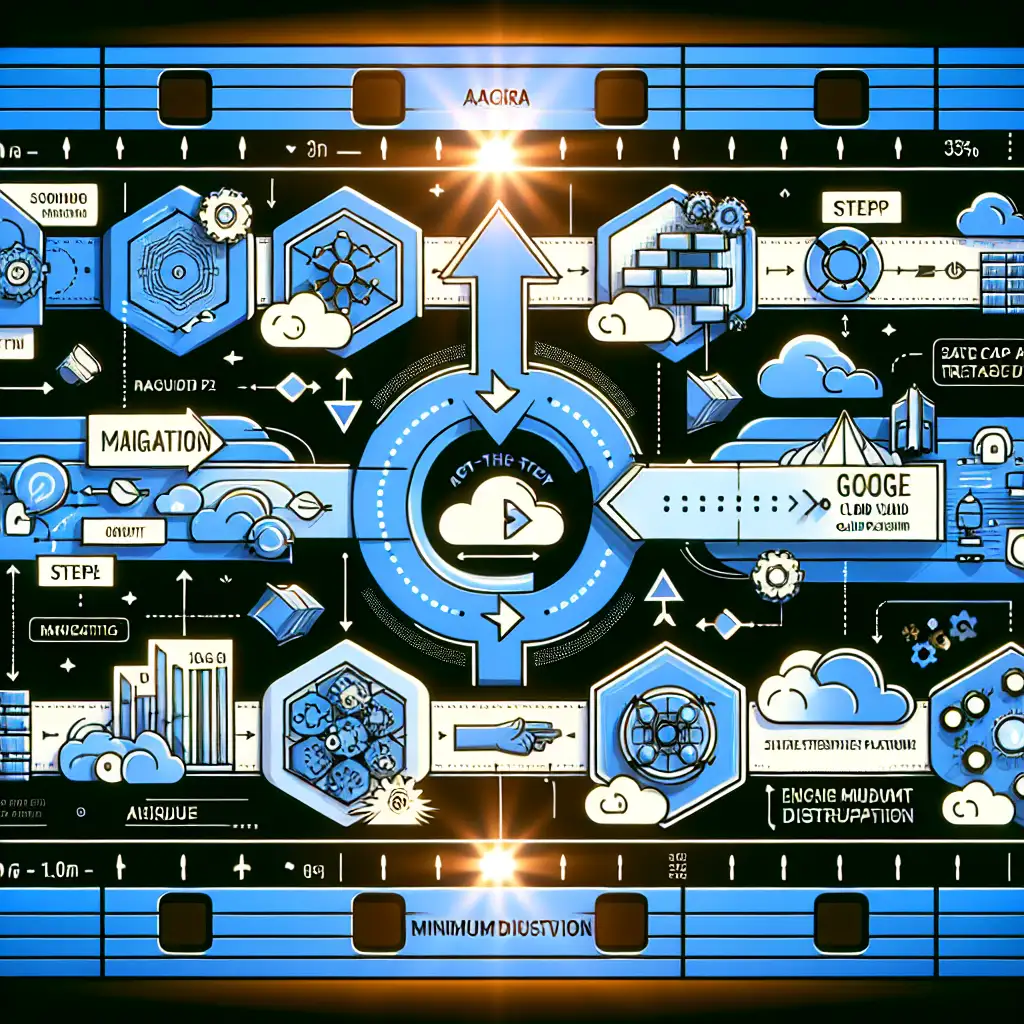Seamlessly Migrating Enterprise Workloads from Azure to Google Cloud: A Step-by-Step Blueprint
Why sticking to one cloud vendor limits your scaling potential—and how a strategic switch to Google Cloud from Azure can unlock new efficiencies and innovation.
In today’s fiercely competitive business landscape, cloud agility isn’t just an advantage — it’s a requirement. Many enterprises initially adopted Microsoft Azure for its robust enterprise integrations and Microsoft ecosystem compatibility. Yet, as organizations grow and adapt, relying solely on one cloud provider may limit scalability, inflate costs, or restrict access to innovative tools.
Google Cloud Platform (GCP), with its strong data analytics capabilities, AI/ML innovations, and flexible pricing, offers compelling reasons for enterprises to consider migrating workloads from Azure.
In this post, I’ll walk you through a practical, step-by-step blueprint to seamlessly migrate your enterprise workloads from Azure to Google Cloud — ensuring operational continuity while maximizing your cloud investment returns.
1. Assess Your Current Azure Workloads
Before you think about migration tools or processes, understand your environment:
- Inventory existing applications and resources: Use Azure Resource Graph for a detailed list of virtual machines (VMs), databases, storage accounts, network topologies, etc.
- Analyze dependencies: Identify interlinked applications and data flows. Tools like Azure Migrate’s dependency tracking or third-party solutions (Cloudamize, Turbonomic) can help.
- Evaluate workload characteristics: Which VMs are Windows-based? Which run containers? What compliance requirements exist (GDPR, HIPAA)?
- Estimate costs and performance: Understand current usage patterns and spending to benchmark against GCP pricing.
Example:
Your CRM system runs on an Azure VM with SQL Server backend; marketing analytics rely on Azure Data Lake Storage; your web services use Azure Kubernetes Service (AKS).
2. Map Azure Services to Google Cloud Equivalents
Google Cloud offers analogous and sometimes superior services compared to Azure:
| Azure Service | Google Cloud Equivalent | Notes |
|---|---|---|
| Virtual Machines | Compute Engine | Similar VM provisioning + preemptible VMs |
| Azure Kubernetes Service | Google Kubernetes Engine (GKE) | GKE is highly performant & integrated |
| Azure SQL Database | Cloud SQL (SQL Server or MySQL) | Fully managed relational DB |
| Blob Storage | Cloud Storage | Multi-regional with strong consistency |
| Data Factory | Dataflow / Dataproc / Composer | For orchestration and data pipelines |
| Application Insights | Operations Suite (formerly Stackdriver) | Monitoring & logging |
Spend time designing your target architecture aligning these services – this reduces surprises post-migration.
3. Prepare Your Google Cloud Environment
Set up the foundation before migrating data/workloads:
- Create Organizations and Projects: Mirror your resource organization structures.
- Set up Networking:
- Configure Virtual Private Clouds (VPCs), subnets, firewall rules.
- Use Cloud VPN or Interconnect if hybrid architecture required.
- Identity & Access Management:
- Integrate with your current identity provider.
- Define IAM roles for least privilege access.
- Enable APIs: For Compute Engine, Cloud Storage, Kubernetes Engine, etc.
Tip: Use Terraform or Deployment Manager for infrastructure-as-code repeatability.
4. Choose the Right Migration Tools & Strategy
Migrating whole workloads involves selecting tools that fit workload types:
For VMs:
- Use Google’s Migrate for Compute Engine tool:
- It supports lift-and-shift migration of VMware VMs and physical servers.
- It can also assist with agent-based live migration.
For Databases:
- Use Database Migration Service (DMS):
- Supports homogeneous migrations like SQL Server-to-SQL Server.
- Enables near-zero downtime migration.
For Containers:
- Export AKS YAML manifests.
- Deploy in GKE with minor adjustments.
- Containerized services usually migrate smoothly.
For Storage:
- Transfer blobs using gsutil rsync commands or through Transfer Service for on-premises data.
5. Execute a Pilot Migration
Start small:
- Pick a non-critical workload — maybe a test app or internal tool.
- Migrate using selected tools.
- Validate application functionality on GCP.
- Collect performance metrics & monitor costs.
This mitigates risk when scaling monthly migrations later.
6. Migrate Production Workloads in Phases
After successful pilot validation:
- Prioritize phases based on criticality and dependencies.
- Communicate timelines clearly with stakeholders.
- Implement scheduled cutovers minimizing downtime — automate deployment with CI/CD pipelines on GCP Build Tools if possible.
Example workflow:
- Migrate dev/test environments first.
- Shift stateless web apps running in AKS → GKE.
- Move databases using DMS during off hours with replication turned on until cutover completes.
7. Post-Migration Validation & Optimization
Once workloads are running on Google Cloud:
- Validate data integrity thoroughly between source and target databases/storage.
- Monitor system logs via Operations Suite dashboards.
- Benchmark application performance—adjust VM instance types as needed based on CPU/memory/network utilization gathered by Stackdriver Monitoring.
- Identify optimization opportunities:
- Move suitable VMs to preemptible instances or use committed use discounts to reduce costs.
- Refactor older apps incrementally into serverless products like Cloud Run or App Engine where feasible.
Final Thoughts
Migrating from Azure to Google Cloud may seem daunting initially — but with a careful assessment, thoughtful planning, right tooling, and phased execution, the transition can be smooth and provide long-term strategic benefits.
Unlock enhanced innovation by leveraging Google’s cutting-edge AI/ML tools alongside scalable infrastructure — ultimately enabling your enterprise workloads to thrive beyond vendor lock-in constraints.
If you’re considering this move and want more help building a custom roadmap based on your unique environment — feel free to reach out!
Happy migrating! 🚀
References & Tools Mentioned:
- Azure Migrate
- Google Migrate for Compute Engine
- Google Database Migration Service
- Terraform
- Google Operations Suite
(This post is intended for IT decision-makers, cloud architects, and engineers planning cross-cloud shifts.)
